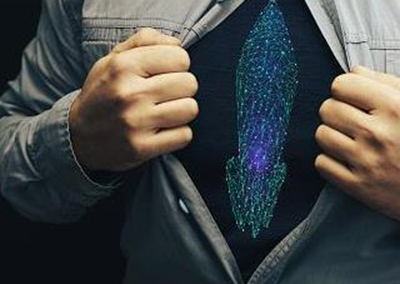For radiologists to be present, fairly valued, and more patient-facing, we must embrace the new technology that is shaping a changing imaging landscape — demonstrating to our patients the true value of our expertise.
In a world of ever-increasing imaging volumes, patient-centered care, and complex care delivery systems, AI has the potential to elevate the way we practice to a transformative level.
The next generation of radiologists is ready to embrace this change and lead the charge. Perhaps the strongest evidence of this is the enthusiastic participation of residents and fellows across the country in the ACR RFS Journal Clubs . These forums allow physicians, data scientists, vendors, and industry leaders to come together to discuss advancements in AI applications for patient care. In fact, Hugh Harvey, MD, a UK radiologist and world-renowned expert in AI, attested to the fact that radiology trainees in America are leading in AI compared to other parts of the world. That is a testament to the contributions made by the new physician workforce within our profession — a group dedicated to solidifying our presence as AI leaders throughout the world.
AI is a welcome development, because the current practice models of delivering care will be severely strained under the pressure of rapidly rising imaging volumes and the potential paucity of radiologists. The radiology community must also address increasing demand for precision medicine. AI can augment what we do by automating onerous, time-consuming tasks while potentially improving our accuracy in the face of fatigue. This could free up time for other in-demand duties as we simultaneously advance the era of Imaging 3.0 .
As part of this value-based system, multidisciplinary activities and communication play a crucial role in the lives of radiologists — whether it’s participating in a tumor board or communicating critical results to an emergency room, to a primary care physician, or even to a patient when delivering breast biopsy results. As a breast radiologist, for example, it’s imperative that I work closely with the oncologist, the surgeon, the pathologist, the nurse navigator, and the social worker to ensure our patients receive the best treatment and support we can offer.
This multidisciplinary approach is more relevant than ever in the push toward personalized medicine. As part of the care team, radiologists provide comprehensive diagnostic insights that can be instrumental in tailoring the care of every patient. Radiologists must come out of the dark rooms and continue to expand our interactions with the rest of the care team. This is already an every-day occurrence in breast imaging and interventional radiology, where radiologists speak with patients on a daily basis.
In breast imaging, AI tools have the potential to drastically improve our diagnostic accuracy and support our decision-making — to improve practice efficiency and the delivery of precision care. In my practice, our team collaborated with a vendor to implement an AI breast ultrasound tool that can offer an instant and accurate second opinion to aid in clinical decision-making. It is a machine learning algorithm that has been trained on more than 400,000 ultrasound images, as well as the corresponding pathology reports, to aid in the differentiation of benign versus malignant lesions in real-time care. We hope to collaborate with other practices and institutions using the same tool and continue to evaluate the accuracy of this potentially ground-breaking breast imaging system.
However, as a profession, we must assert that we cannot and will not be replaced. We must make ourselves available to referring physicians to discuss diagnoses and treatment of patients. In breast imaging, discussing a result with the patient is central to what we do, particularly with diagnostic examinations. This puts patients’ minds at ease, especially if they have had a previous cancer diagnosis. Although applications of AI in medical imaging have the potential to create monumental changes in radiology, it is this human touch that cannot be replaced. Thus, radiologists will always add value, where technology alone cannot.
We have an avenue of innovation through AI applications to help us be better at our tasks, from supporting diagnostic accuracy to carving out more time for patients. We must continue to be present and stress that this paradigm shift will not be achieved if we, as radiologists, are not present and more patient-facing, providing personalized expertise that technology cannot. This is how our contribution will continue to be valued within patient care and our professional role will always remain relevant.
Original publication on Data Science Institute. American College of Radiology.
Amy Patel, MD | Breast Radiologist, Alliance Radiology | Medical Director, Liberty Hospital Women’s Imaging | Associate Professor of Radiology, University of Missouri-Kansas City School of Medicine


